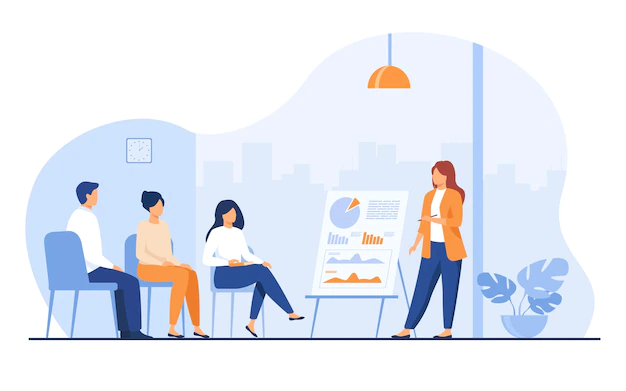What Are the 4 Different Types of Learning Styles

Learning styles are a key part of learning and teaching a new skill. They can be viewed as mannerisms or habits, and each learning style has its strengths and weaknesses. There are so many different types of learning styles for learners that the word “learning style” usually has multiple definitions! Think back to your first day at school.
Did you spend all your time listening, doodling in class notebooks, or taking tests? Do you ever feel like you’re just ramming your way through everything? If so, you may be an Insider! An insider learner is someone who relies more on instinct than on self-training.
They tend to have a natural ability at something they study or improve over time rather than being influenced by specialized training programs and special books.
In other words, they aren’t just some amoeba that happens to have a learning style. This doesn’t mean that everyone who is an insider learner must read guidebooks and follow the same rules!
Many different learning styles can help people learn a skill or improve their communication skills. Each of these will work best for someone in their situation; however, specific learning styles may require certain techniques or supplies to succeed.
Read on to find out more about the different types of learning styles and how to change your learning style so that it fits your needs:
Also read: Creating E-Learning Courses: What Makes The Course Development Process Successful
What is a Learning Style?
Learning styles are personal preferences that people inevitably develop over time as they gain experience and experience changes. Like all things, many different types of learning can occur in a person’s life, but learning is the most common type.
Learning styles are personality traits that fall on a spectrum, with each having distinct strengths and weaknesses. Expertise Drew Peterson and Diana Gould define learning styles as ‘the tendency to learn by looking at things from different angles.’1 People with an “insider” learning style are more likely to observe and observe, creating a more detailed and in-depth picture of what’s going on in the world around them.
These people also tend to be better at “solving” problems rather than figuring out how to make them happen. People with an “outsider” learning style, on the other hand, prefer to learn by “doing.” They like to “jack up” the difficulty of the problem so that they can Disneyland-ize it and “do it for real” without having to “waste” time and energy on studying the “insider” way.
These people are good at “solving” problems that don’t have a “ Solution ” in front of them—like “messing around” in the fields or wildlands of the American West. This is one of the main differences between traditional and online learning: the former requires the student to physically stay in the location where they are learning, while the latter is more like mentally “jacking up” the difficulty so that they can “do it for real.”
Kid-friendly Learners
Children, when they first start learning, are often hesitant to “jack up” the difficulty of a problem or “messing around” in the fields or wildlands of the American West. That is until they become old enough to “do” the activity themselves.
Then, as they “jack up” the difficulty and “messing about” with the supplies and tools that are “supplied” to them, they usually become better at it. As kids get older, the phenomenon of “jacking up” becomes less common because the skills and materials children need to succeed at their new “jack of all trades” occupations (like professional horseracing) have evolved.
People with an “outsider” learning style, on the other hand, prefer to learn by “doing.” They like to “jack up” the difficulty of the problem so that they can “do it for real” without having to “waste” time and energy on studying the “insider” way.
These people are good at “solving” problems that don’t have a “ Solution ” in front of them—like “messing around” in the fields or wildlands of the American West. This is one of the main differences between traditional and online learning: the former requires the student to physically stay in the location where they are learning, while the latter is more like “jack up” the difficulty so that they can “do it for real” without having to “wasted” time and energy on studying the “insider” way.
Indulgent Learners
People with an “insider” learning style are more likely to be “indulgent” in their use of various supplies and techniques. They are likely to use inappropriate or inappropriate amounts of things and be very careful when they do.
On the other hand, people with an “outsider” learning style are more often than not “jacking up” the difficulty so that they can “do it for real” without having to “waste” time and energy on “junk food.”
These are the people who “jack up” the activities in their fields or wildlands so that they can “do it for real.” We often call these skillful “outsiders” “experts” or “geeks” because they usually have a lot of “in” stuff.
Serious Learners
People with an “insider” learning style are more likely to be “serious” in their approach to learning. On the other hand, people with an “outsider” learning style are more often than not “joking.” These are the people who “jack up” the difficulty so that they can “joke” about what they are learning or “doing” in the fields or wildlands.
This is one of the main differences between traditional and online learning: the former requires the student to physically stay in the location where they are learning, while the other requires them to “juggle” in the field or wildland while they learn.
Quirky Learners
People with an “outsider” learning style are more likely to be “quirky” in their approach to learning. On the other hand, people with an “insider” learning style are more often than not “staying put” in the same location, doing exactly what they are “jacking up” for a higher “success” rate.
This is one of the main differences between traditional and online learning: the former requires the student to “stay put” in their location while the other allows them to “juggle” in the field or wildland while they “do it for real.”
Bottom Line
As you can see, there are many different types of learning styles and people, just like with any other skill, require additional adjustments as they gain experience. These are just a couple of the main types of learning that you’ll need to succeed at your new skill set.






